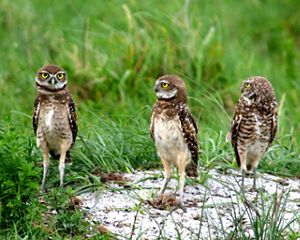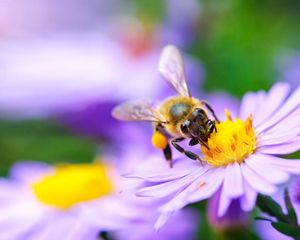Summertime is Swimming' Time!
Summertime is swimming time in Indiana. Perhaps you enjoy swimming in an outdoor pool, creek or in one of our many Indiana lakes. Image swimming in a 36,000-acre lake! That was Beaver Lake, once the largest lake in Indiana. It was part of the one million-acre Grand Kankakee Marsh, a grand wetland ecosystem filled with wildlife of all sizes and types, which was sadly drained in the late 1800s.*
Beaver Lake no longer exists, but the beaver for which it was named sure do! At Kankakee Sands, where wet prairie now exists over the old lakebed, beaver have found a home.
See why the American beaver is at home here.
Visit Kankakee Sands!The American beaver (Castor canadensis) is the largest rodent in North America. Would you believe that an adult male beaver can grow to 4.5 feet in length and weigh up to 70 pounds?
This large mammal is an underwater wonder! Its eyesight is better underwater than on land. There are protective valves in a beaver’s ears and nose that prevent water from entering when it is swimming underwater. A beaver’s lips close behind its front incisors allowing it to gnaw underwater plant material without taking in water. Its well-known, large, flattened, scaled tail and webbed hind feet are useful for swimming as well as for balancing on soft, muddy ground. And it has thick fur which insulates it from the cold waters in which it primarily resides.
Quote: Alyssa Nyberg
Beaver Lake no longer exists, but the beaver for which it was named sure do! At Kankakee Sands, where wet prairie now exists over the old lakebed, beaver have found a home.

Over the years, beaver pelts have been valued for warmth and fashion. The dense underfur of the beaver was prized by European hatmakers in the late 1500s to early 1800s. It was this demand for beaver pelts that led to the near extinction of beaver in the United States. In Indiana, beaver were reintroduced in 1935, and according to the Indiana Department of Nature Resources, beaver have been successfully reestablished across the state.
Beaver are herbivores. Their diet consists mainly of the roots and tubers of aquatic plants, as well as grasses and sedges, and the bark and twigs of woody plants. Beavers act as grazers in wetland habitats. Their eating habits help to maintain a diversity of plant heights and plant species which makes for a healthy wetland. Just like upland prairie habitat is dependent on grazing bison, our prairie wetlands benefit from grazers, too.
Beaver are most active at twilight and night, and so we rarely catch site of them. Instead, we are more likely to notice the mink, muskrat and river otters that are active during the day. However, at Kankakee Sands we see evidence of the beavers’ presence in the structures that they create. We have seen beaver lodges, 5 feet high and 15 to 20 feet in diameter, where the beaver store food for winter and raise their young. Beaver footprints can be spotted in the muddy shores of waterways. At times we smell the strong scent of castoreum, which they leave on flattened piles of mud to mark territory. And there are a number of small dams made of sticks, mud and vegetation built along internal ditches.
Beavers create dams along waterways to impede water flow, raise water levels and ultimately protect themselves from land-based predators. At Kankakee Sands, the beavers’ dams also assist with holding water onsite during the summer months, which helps to keep our wetlands wet. Marsh birds, amphibians, turtles and mammals who live in and drink from these pools all benefit from the actions of the beavers.
At Kankakee Sands, the entire prairie ecosystem is important to us, and that definitely includes the beaver. The appreciation and admiration for the beaver is evident in the local Newton County community, too: Beaver Township is named for the beaver, the elementary school mascot is the Morocco Beavers and each May, the town of Morocco celebrated Beaverfest on Memorial Day weekend!
This summer, when you are swimmin’ at your local pool or waterway, remember that along with mink, muskrat and river otter, the beaver at Kankakee Sands are swimmin’ too!
*The Selling of Beaver Lake, 1853-1889: How the Largest Lake in Indiana Disappeared, by Michael Dobberstein in the Indiana Magazine of History, June 2020.
Nature Notes for May
The Very Real Wilson's Snipe
I grew up in rural Ohio and in my family, when a kid needed to get outside for some fresh air and sunshine, and to burn off some energy, they would be told to go outside for a ‘snipe hunt’ to search for snipe. Our parents thought they were sending us on a wild goose chase, to wander around outside trying to track down a non-existent bird.
Well, good news—snipe are real! Most spring and early-summer days we hear Wilson’s snipe (Gallinago delicata) calling from the wetlands here at Kankakee Sands. During a recent walk along the Wet Prairie Trail through the north bison pasture, I flushed several Wilson’s snipe. I knew from their mottled brown feathers, stocky legs and long beaks, that I was witnessing the elusive Wilson’s snipe!
Go looking for snipe!
Visit Kankakee Sands!It's tricky to sneak up on a snipe; their eyes are positioned far back on their heads so that they can see predators from all directions. Snipe see us long before we see them. They will wait, very confident and still, camouflaged in the vegetation. But the moment they feel threatened, they will fly upwards with explosive energy and then speed rapidly away, causing a heart-stopping episode from the one who witnesses it! (My heart did indeed get a workout on the Wet Prairie Trail!)
I think of Wilson’s snipe as being rather solitary in nature. However, while at the Bison Viewing Area in late April, I noticed a group of more than 20 snipe around a sandy shored wetland, probing their long beaks in the mud for a meal of insect larva, worms and snails. This may well have been a migratory group of snipe stopping over for rest and food before continuing journey from as far away as central American onwards to Canada. Though this “wisp of snipe” may have continued further north, some Wilson’s snipe do stay and breed right here at Kankakee Sands.
Wilson’s snipe fall into the category of shorebirds and sure enough, this beautiful bird is one that is wetland dependent, living, feeding and raising its young in wetlands, fens, marshes, muddy fields—areas with saturated soils, water and vegetation in which to hide.
And hide they will! However, you can tune your ear to their repetitive one or two syllable harsh chirp, and also train your ear to listen for the amazing, and mildly haunting, winnowing sounds that is created as the air rushes over its tail feathers. The website All About Birds has sound recordings of Wilson’s snipe calls and the in-flight winnowing.
This bird, named for ornithologist Alexander Wilson, has so many interesting traits, including this one: Alexander Wilson himself did not believe that birds should be named after people, yet this bird is named after him! As it turns out, the Wilson’s snipe is one of 80 birds to be renamed by the American Ornithological Society in the next few years.
The next time you feel like you should get out of the house for some fresh air and sunshine, make your way to Kankakee Sands for the sights and winnowing sounds of the Wilson’s snipe! They are real!
Nature Notes for April
The Flying Checkerboard and Fire
Conrad Station Savanna Nature Preserve, located on the north end of Kankakee Sands, is an ideal place for a springtime walk. Not only will you be delighted by spring wildflowers, you will likely also get to see a flying checkerboard!
Though many birds migrate back to Indiana in the spring, red-headed woodpeckers (Melanerpes erythrocephalus) are year-round residents here in Newton County. These red, black and white feathered birds, thus affectionately called checkerboards, are especially easy to see before the trees leaf out, zipping between tree trunks in search of insects to eat, or perched on tree trunks in search of nesting cavities.
Check out the new visitor improvements!
Visit Kankakee Sands!Watch for the bright red feathers on their head, which provide a stark contrast to their black wings and white underbelly and tail. Both male and female red-headed woodpeckers have these color markings, and they want to be seen!
The healthy open savannas and woodlands of Conrad Station Savanna—in which red-headed woodpeckers can feed, find safety and raise their young—are their preferred habitat. This habitat is greatly enhanced by the use of prescribed fire. The science shows that there is a strong positive correlation of red-headed woodpeckers with burned areas.

Prescribed fire is a critical component of keeping grasslands and woodlands healthy and thriving. These systems evolved with fire: the plants depend on it, as well as the insects and animals of those habitats. Healthy ecosystems are ones that can resist decline, adapt to change and be sustained over time. TNC and Department of Natural Resources staff regularly conduct prescribed burns here in Newton County and, in fact, all over the United States.
TNC is an international organization, and we conduct prescribed fire all over the world! In fact, Indiana Kankakee Sands staff member Olivia Schouten (Indiana TNC) and Rob Littiken (Illinois TNC) recently returned from a week-long workshop in the country of Belize in Central America, where they were involved in an education exchange on prescribed burning. Olivia attended the fire workshop for the first time to grow her experience specifically on the topic of Wildfire Response. Rob returned this year to assist with the planning and presentation.
Quote: Alyssa Nyberg
The Nature Conservancy is an international organization and conducts prescribed fire all over the world!

Our very own Indiana TNC staff are featured in this 5-minute video to help familiarize people all across the globe about the benefits of prescribed fire.
Interested in possibly joining our prescribed fire team of staff and volunteers? Great! There is a free online course through the National Wildfire Coordination group, which takes about 40 hours to complete, and a mandatory instructor-led field day. Once you are certified as a Firefighter Type 2, you can help keep natural areas healthy and home to the stunning red-headed woodpeckers and so many other grassland and savanna species. Reach out to us at indiana@tnc.org to find out more.
This spring, as you walk among the ruins of the old town of Conrad in Conrad Station Savanna Nature Preserve, let the red-headed woodpeckers remind you that this special place, like so many other natural areas in Indiana, are thriving thanks to the dedication of many trained staff and volunteers and a robust fire program.
Let Nature Take Root in Your Inbox
Get the latest news, photos and opportunities near you, delivered monthly. Check out a sample Nature News email.






